10 most unusual natural poisons
Categories: Animals | Health and Medicine | Nature | World
By Pictolic https://pictolic.com/article/10-most-unusual-natural-poisons.htmlLike millions of years ago, a bizarre ballet of life and death goes on every day on our planet, without stopping its movement for a second. Every time, millions of living beings use all their centuries-old evolutionary adaptations just to survive until the next sunrise. Each death does not weaken the species as a whole. Each deadly act protects and warns other members of the species, and leaves the strongest and fittest alive.

But sometimes death takes on bizarre forms when various neurotoxins come into play. A neurotoxin is a chemical compound that acts strictly on nerve tissue. If the principles of the Geneva Agreement were in effect in the animal world, neurotoxins would be banned. These poisons are surprisingly perfect, but the death that they cause is terrible and terrible.
Each such poison has a fancy scientific name, which we will indicate along with the effects that it causes.
Many types of neurotoxins "turn off" the nervous system, but atracotoxin works exactly the opposite. It stimulates the nervous system so that it begins to work at the limit of its capabilities. In the end, the most terrifying consequence of its ingestion is that the blood pressure in the small circulatory circle increases enormously, as a result of which the alveoli of the lungs simply explode, and a person drowns while on solid ground.

And the most terrible thing. This poison is completely safe for almost all living beings, and even for mammals. But it works great on primates. Of all the living creatures that this damned spider should have protected himself from, he chose man. Us. OK, also monkeys, but mostly us.
This particular neurotoxin is found in the Sydney spider, which has only been seen in Sydney, Australia. And this is the most dangerous spider on the whole globe, as its venom can easily kill you in just 15 minutes. To the greatest joy, an antitoxin was developed about 30 years ago, and for three decades there has not been a single recorded case with a fatal outcome. However, this is a reason not to rush to visit Sydney, Australia, as there is a considerable chance to meet this cute spider.
Dortoxin is found in the South African spitting scorpion, and is probably one of the most unpleasant poisons you could die from. However, do not relax, there are still many discoveries ahead, and it's too early to choose a way to die.

So. When the researchers tested the toxin on mice, it led to convulsions, convulsions, and hyperactivity, which did not end for 30 seconds after the death of the mouse. The most terrible thing is that it took some 20 nanograms (!) to kill a large animal.
The venom of the spitting scorpion is specific in that it is actually represented by three different toxins. Moreover, the scorpion, depending on the victim, can choose the type of poison. The scorpion is called spitting because it "spits out" a certain amount of venom towards the target until the moment of the bite.
Scientists believe that in this way the scorpion retains the strongest toxin, which requires a lot of energy for its synthesis. The same small portion of a not so lethal toxin of a large predator can simply scare away, and directly kill small animals (scorpion prey) on the spot, allowing the scorpion to save the most powerful weapon in reserve.
Have you ever seen movies where people, having licked a toad, started behaving inappropriately? By the way, this is quite real, and this is how bufotoxin works, consisting of a cocktail of chemicals found on the bodies of certain toads. Among other alkaloids, Bufo toad venom contains 5-MeO-DMT, a psychoactive substance similar to psilocybin and mescaline, which together are known as "God's breakfast". Thus, some of the effects reported by those who have tried mescaline and similar products are precisely due to the state of altered consciousness that occurs under the action of this toxin.
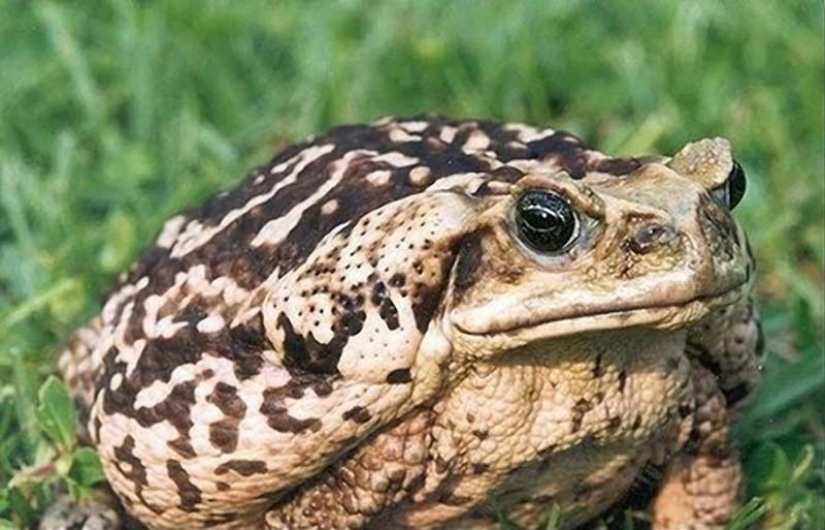
This poison is secreted through the glands on the back parts of the body of Bufo toads and is simply a protective mechanism. You can laugh for a long time, but such a toxin is much more effective than many types of deadly poisons. Unlike neurotoxins, which kill the victim, it has the property of firmly cutting into the predator's memory, hinting that such toads should not be eaten.
Imagine that you are a predator who decided to have dinner with such a toad. Imagine an unfortunate predator who, after attacking a toad, was thrown out of our universe for three hours! How will the animal feel after that? However, if the animal was small, and the portion of the toxin that the frightened toad released was large, the predator may well die.
Studies of Lonomia (Lonomia obliqua) are still underway. Despite the fact that the first case of poisoning by this caterpillar was recorded two decades ago, since then only about 500 people have officially left this world through its fault. If it seems to you that this is not much, just know that the aforementioned Sydney Spider has sent only 13 people to the grave over the past 100 years.
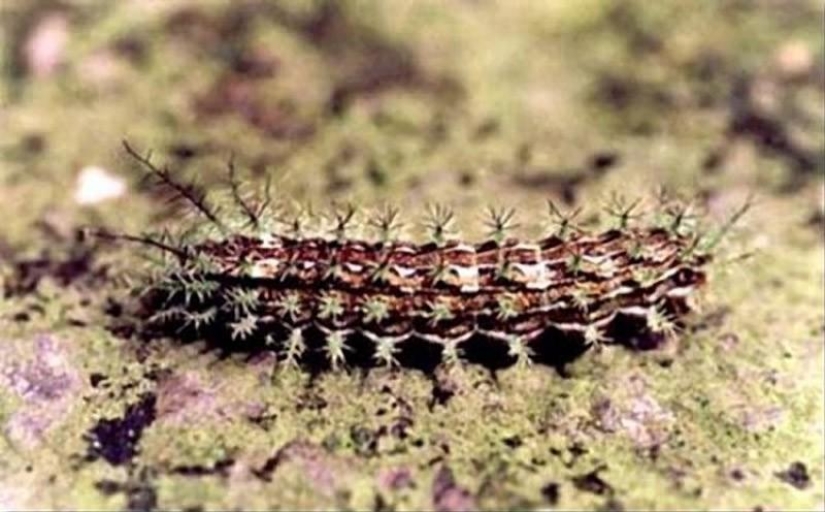
Researchers still do not know exactly the composition of this diabolical cocktail, but they have perfectly studied the consequences of getting poison into the human body. One woman who was stung by a caterpillar died of intracranial bleeding. In fact, her skull was filled with blood. There are many similar cases, which is why a certain opinion about the nature of this poison has begun to form among scientists.
Now most of the scientific world assumes that the poison acts on prothrombins, not allowing the blood to clot. In fact, in this case, we should not talk about a neurotoxin, but about a hemotoxin. As a result, the blood loses its ability to coagulate, becomes thinner, and a person can die from the slightest accident.
In other words, as a result of an incredible hyperemia, your internal organs may simply burst.
To be honest, we already have a very special opinion about spiders. Spiders are some of the most cold—blooded killers in the animal kingdom, and if they created a society based on the ability to kill, then the Brazilian wandering spider would be their king. One of the main components of the venom of the Brazilian wandering spider is a neurotoxin named PhTx3.
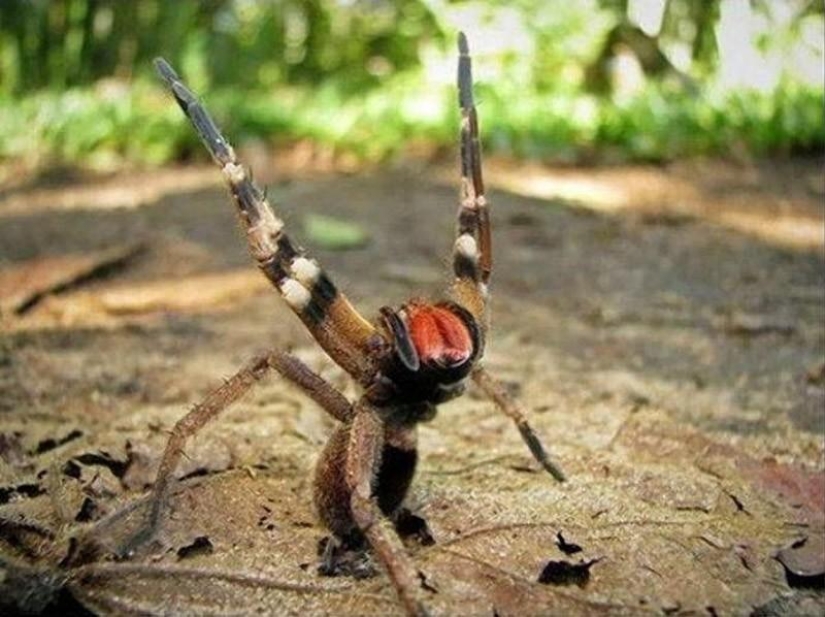
You can please men. This toxin can cause an erection. Very strong. Strong enough that it will be the last erection in your life, after which you will remain impotent. Laugh, but those who have experienced the effects of the poison on themselves do not want to laugh anymore.
This effect is called preapism, and is caused by a certain element in a neurotoxin called Tx2-6. From an evolutionary point of view, this spider is just a sophisticated sadist. He does not kill his attacker, but makes him incapable of procreation.
In addition to an incredible erection, PhTx3 has a much more dangerous effect. It can block calcium channels in muscle synapses, which is why muscles cannot contract. As soon as the effect spreads to the diaphragm, you are finished. Simply put, you will simply suffocate.
When you think of animals that can cause a terrible death, snails are usually not the leaders of your top 10. And in vain…
The cone snail is a killer. The complex group of neurotoxins it uses to kill prey is known as conotoxin, and is one of the strongest toxins in the world. The reason that cones produce such a powerful toxin is that they need to kill their prey as quickly as possible. After all, they are predators, but predators are slow. Cones shoot a kind of harpoon at the victim, which most often makes victims of people who like to collect shells.
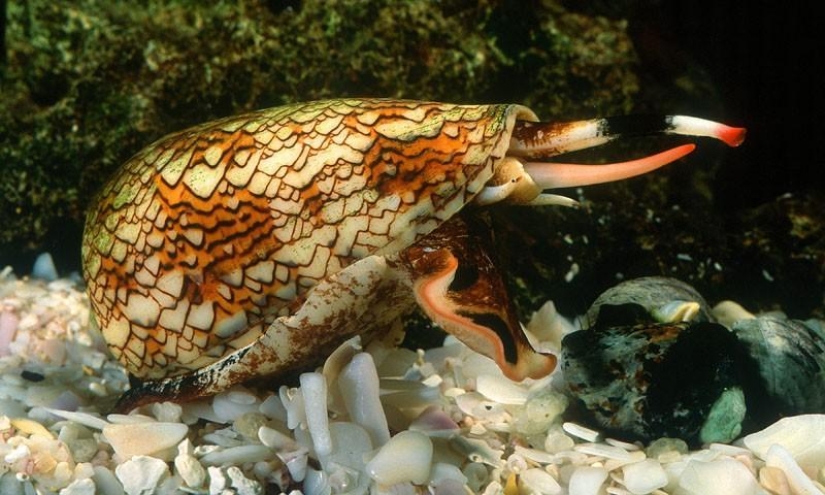
The danger lies in the fact that there are many varieties of cone, and each type of snail is toxic to a different degree. Some sting is no more dangerous than a bee, while small and harmless-looking cone varieties can easily kill an adult. Cone toxins are unique not only for their strength, but also for their incredible variety. Just imagine the following: about 100 varieties of these cute snails are known in total.
Each subspecies can have up to 500 different varieties of poison, which as a result gives 50 thousand variants of the deadly toxin! It is simply impossible to develop an antidote to such a quantity. The difficulty is that each such toxin acts differently. For example, one of its varieties has an analgesic effect. Only when you start dying, you will realize how serious everything is, but it will not help you in any way.
There is a good chance that you are familiar with the amazing frogs, whose slime the Amazonian Indians lubricate the tips of their arrows. Some of them are so poisonous that if there is the slightest scratch on the exposed area of the skin that the frog came into contact with, you can die. But the most amazing thing is not even that. More surprising is how frogs manage to synthesize that batrachotoxin, which is such a dangerous poison.
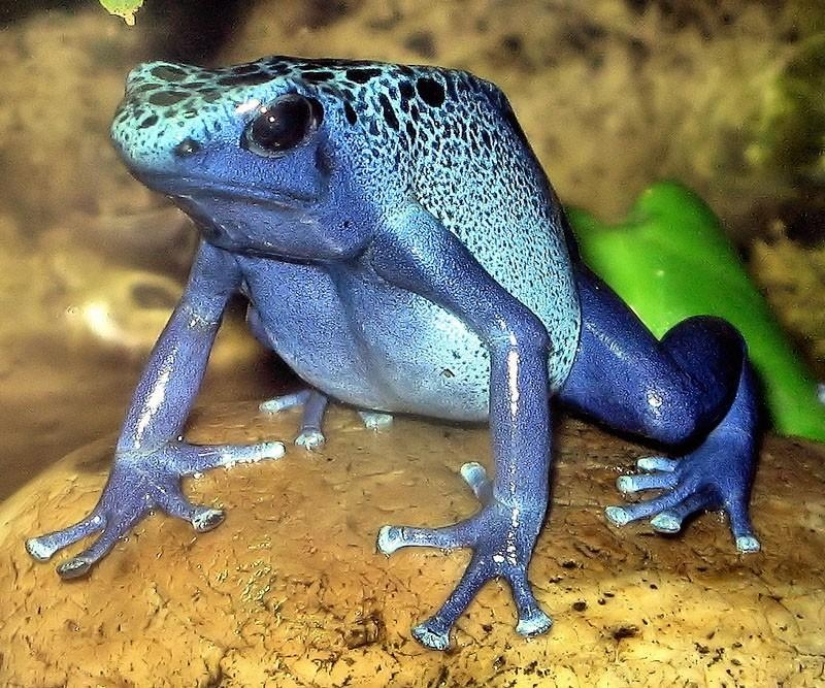
In most cases, every poisonous creature on the planet has glands that are responsible for the production of the toxin. They work as a self-sufficient factory, synthesizing the toxin as a result of complex chemical processes. In these frogs, the presence of the toxin depends on what they eat. The body of these frogs is designed so that they store this toxin, which comes to them with food the way our body stores fat or carbohydrates. And this is the uniqueness of these amazing creatures. They can be deadly, or they can be completely defenseless.
Professional scientists studying amphibians are well aware that these frogs, being raised in captivity, are completely harmless. Even those frogs that were caught in the wild, after a certain period of keeping them in captivity on a simple diet, completely lose their toxic properties. But if such a frog is released into the wild, after a while it will become poisonous again.
And this is good news for those terrarium lovers who like to keep these creatures in captivity. A wild frog can contain up to 13 thousand micrograms of toxin, whereas only 130 micrograms are enough to kill one person.
The Irukandj jellyfish is one of the most common deadly jellyfish of the World Ocean. These jellyfish are responsible for at least 70 confirmed deaths. They live near the coast of Australia, and are so small that many people, even being stung by it, did not notice anything. People who got off happily will only learn about what bit them from a medical professional.
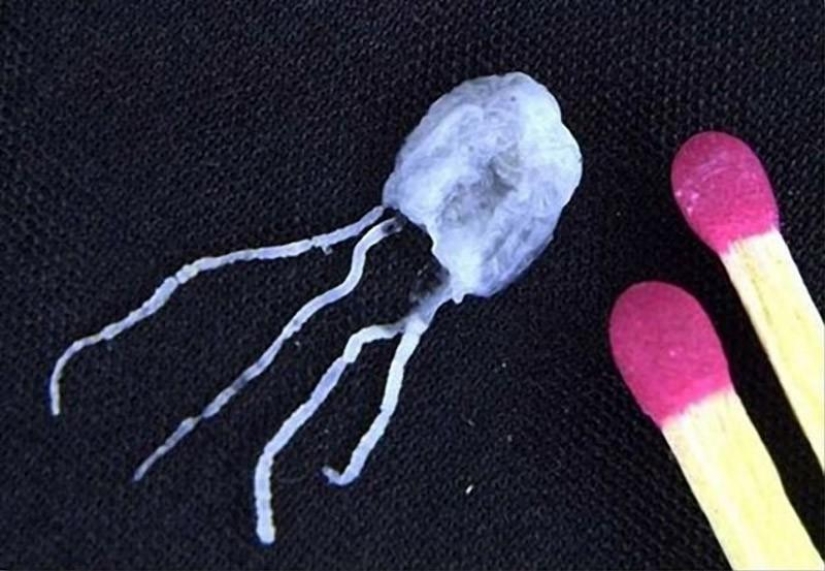
The sting of this jellyfish (by the way, it is no bigger than a child's little finger nail) contains such a strong poison that it can kill an adult healthy man. The power of its venom is so great for exactly the same reason as the cone snails. They are too slow to chase wounded prey, and therefore need the most effective means of killing it. However, it is for this reason that sea snakes are hundreds of times more poisonous than any of their terrestrial relatives.
That's just there is one small unpleasant nuance. A shrimp or a small fish will really die instantly, whereas a person will have to experience a whole bunch of painful sensations before death. Wikipedia states in this regard: "excruciating muscle spasms, severe back and kidney pain, burning sensation of hands and face, headaches, nausea, restlessness, sweating, vomiting, increased heart rate and blood pressure, as well as a sense of impending doom."
The feeling of impending doom ... agree, it's just terrible. Not only to suffer, but also to know at the same time that you will definitely die…
If you do not talk for a long time about why the bird suddenly became poisonous, then you can immediately say that it receives poison from the same place from which the frogs described above receive it. So why are we listing this again? First of all, homobatrachotoxin is a neurotoxin found in a two—colored pet, which can be rightly called a "damn bird". The bicolored pitochu is the first venomous bird discovered, although several more varieties have been found since its discovery.
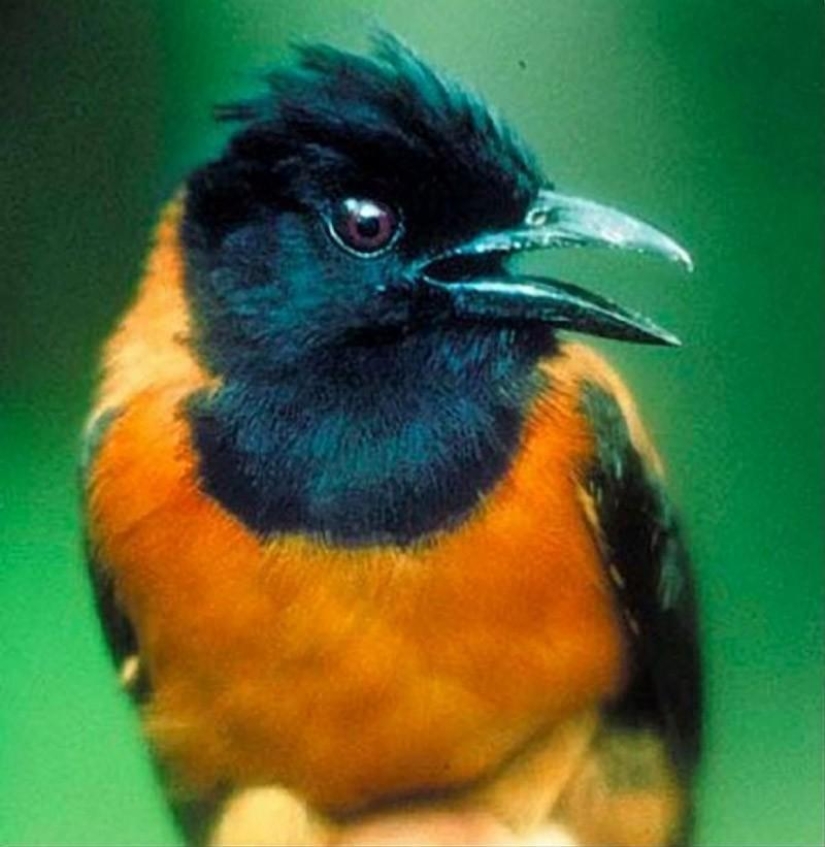
Yes, it's really weird. Remember how we said that poisonous frogs get their toxin from food? Well, the two-colored petohu lives in Papua New Guinea, about 10,000 miles across the Pacific Ocean from Central America and South America (the main habitats of poisonous frogs). But despite this, the bird was able to develop exactly the same ability to accumulate this toxin (incredibly rare) related to batrachotoxins.
But this is all the more strange when you consider that their diets are completely different! And to assume that exactly the same ability to accumulate a completely unique species will develop, and even in animals of completely different classes and families? However, this is indeed the case.
Puffer fish is widely known all over the world. Moreover , she did not get fame at all for its amazing ability to inflate like a balloon, being pulled out of the water, and for the amazing sushi that can easily send you to your forefathers. The toxin that is responsible for such an outrage is called tetradotoxin. The name was taken from the Latin name of this fish.
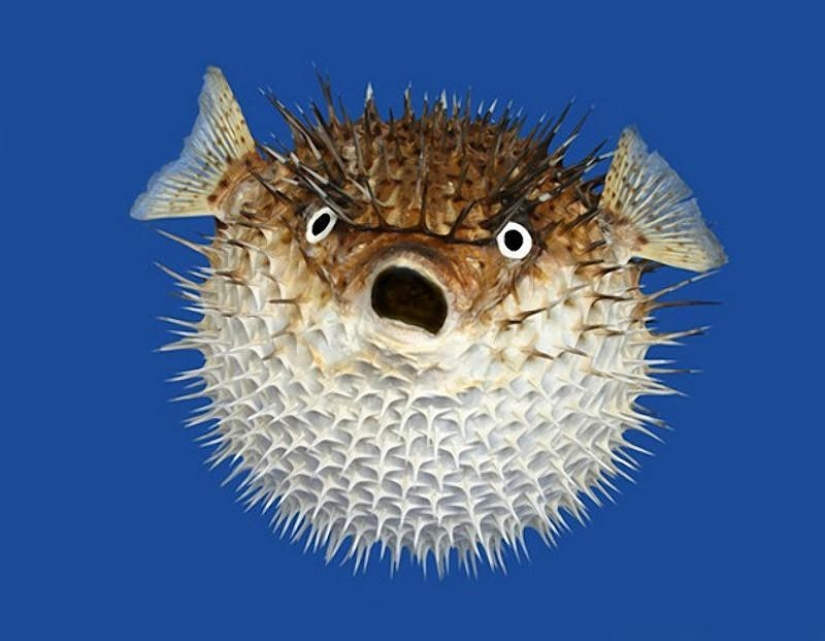
And we come back to the problem of the origin of this poison in the animal's body. The same neurotoxin, which is 100 times stronger than the infamous potassium cyanide, is found in the blue ring-shaped octopus, several species of newts, and in many sea snails. Therefore, this toxin is actually produced by bacteria that have developed a symbiotic relationship with all these different marine animals. For various reasons, these animals have evolved to be able to coexist with these bacteria in a mutually beneficial relationship.
Simply put, bacteria are the main weapon factories. Some animals use these symbionts for defense, and some, on the contrary, for attack. However, in this case, the puffer fish does not use these roommates for either. It just so happened that they developed a mutually beneficial symbiosis, thanks to which several dozen people per year die after trying out forbidden food.
Recent articles

Leonardo da Vinci was accused of being fond of orgies. William the Conqueror, despite all his successes, was called a "Bastard" ...

Modesty? Decency? A sense of tact? No, you haven't heard! Just look at what the people from the selection below are doing! No ...

American documentary photographer Bruce Davidson came to the UK in 1960 for a couple of months on the assignment of Queen magazine. ...